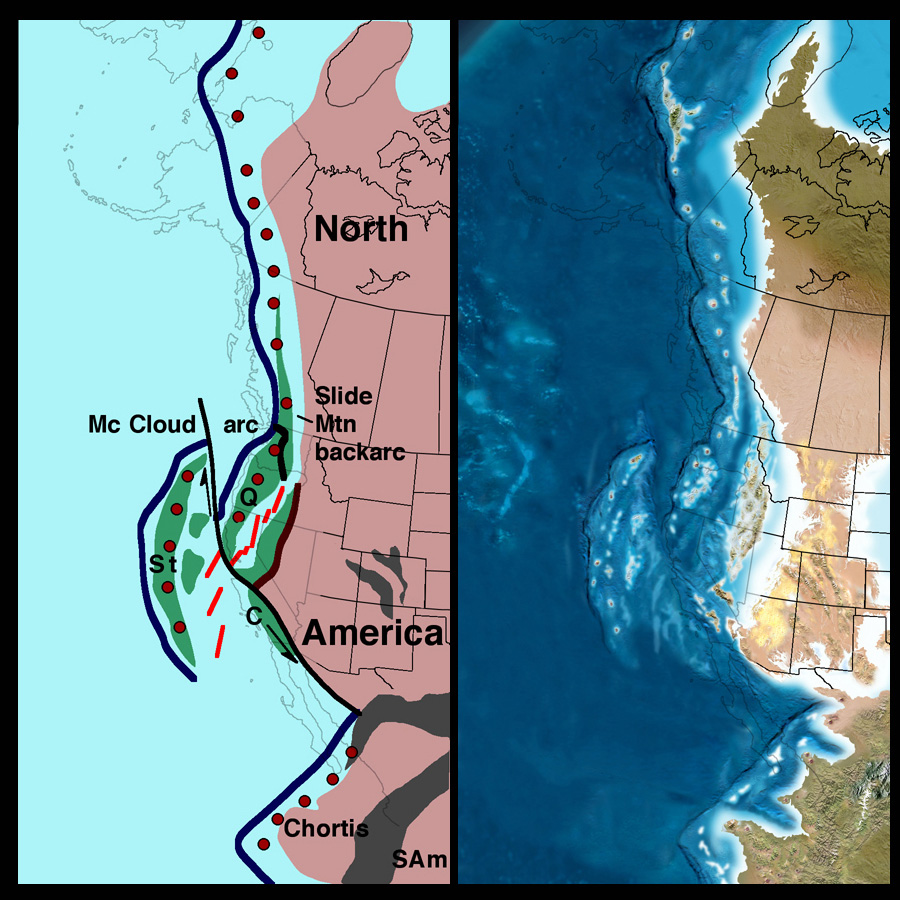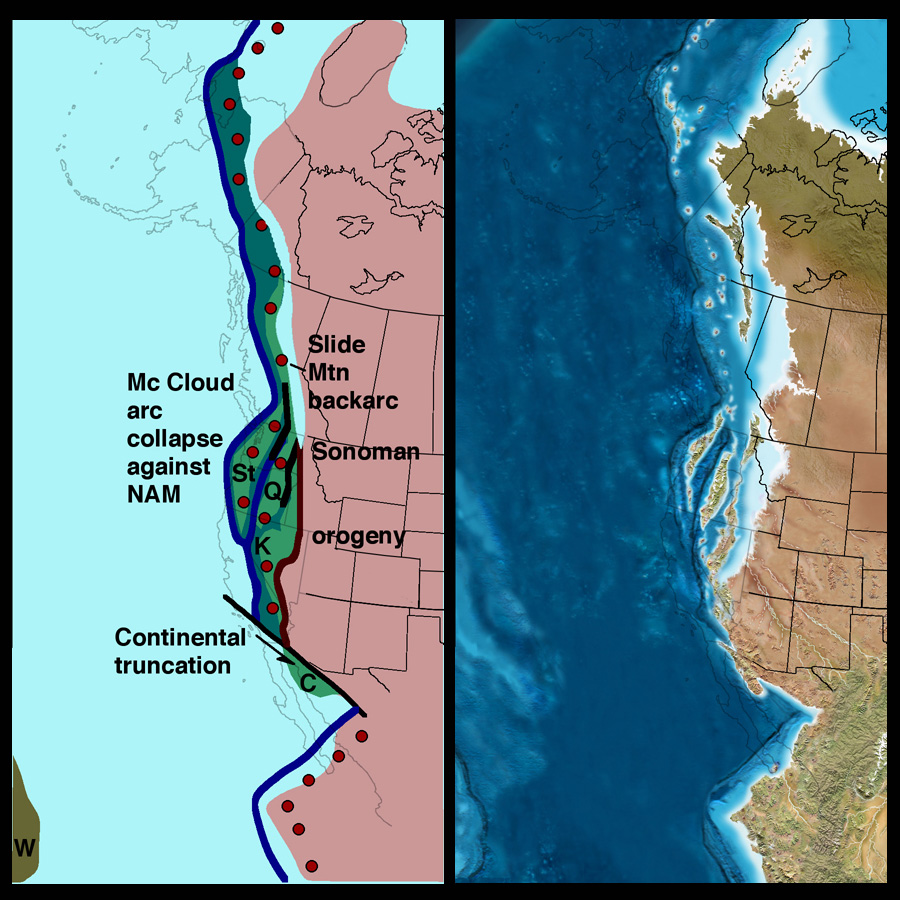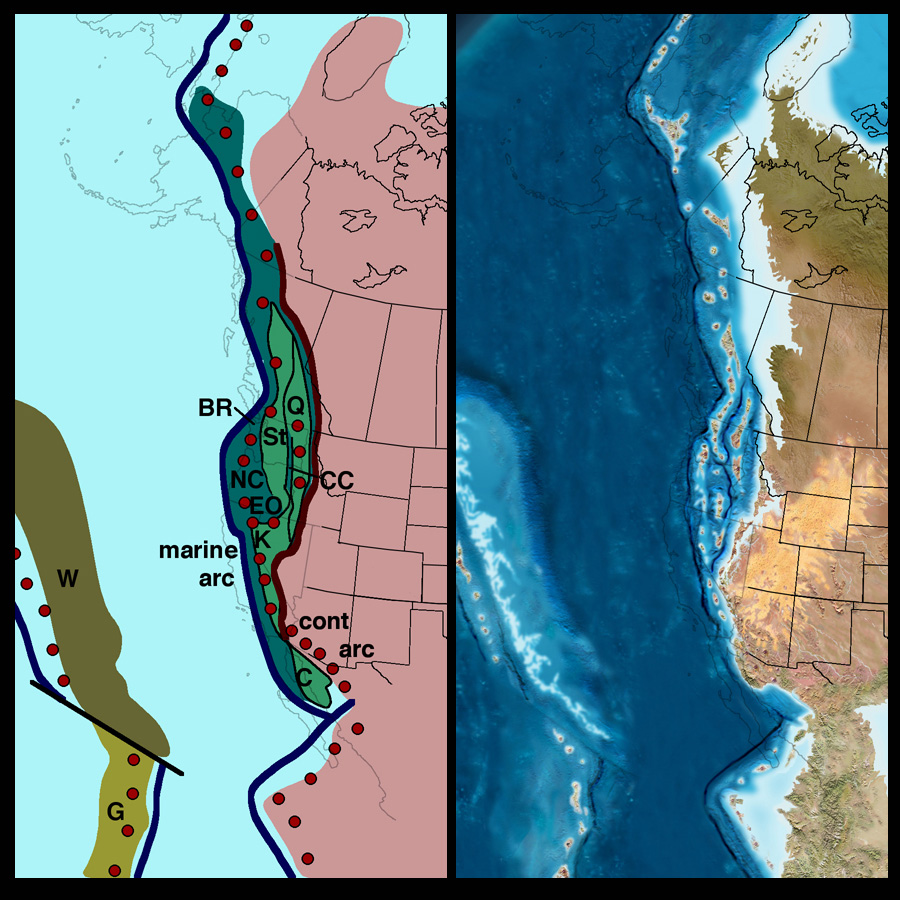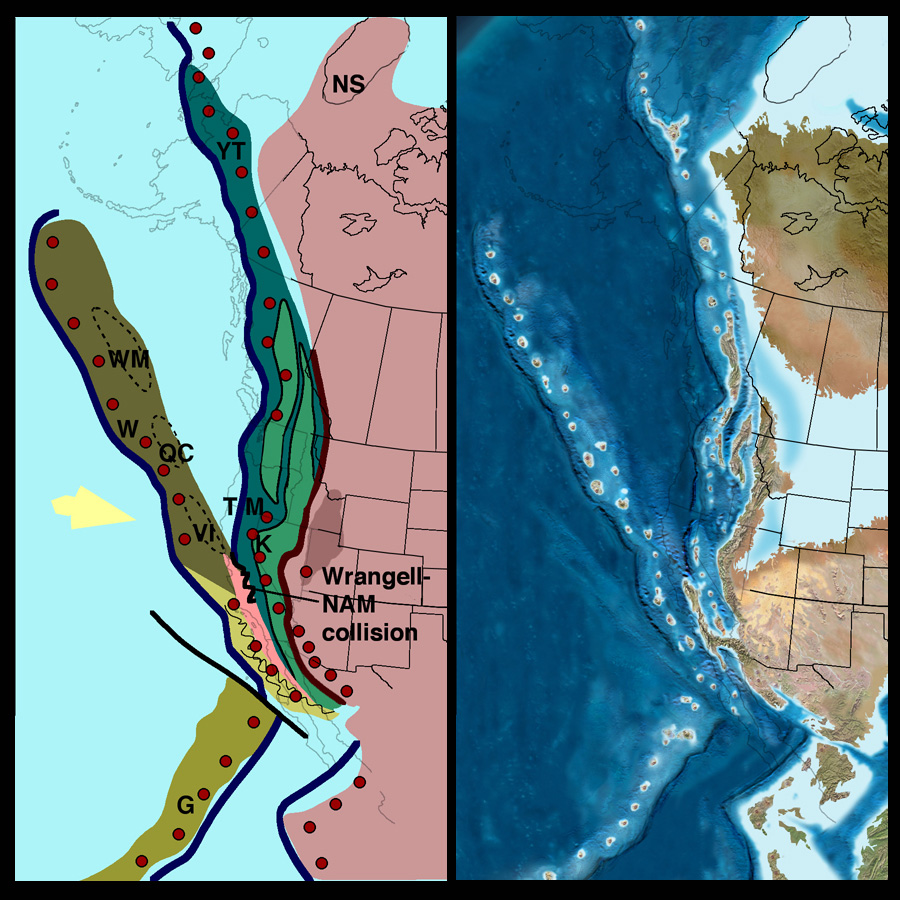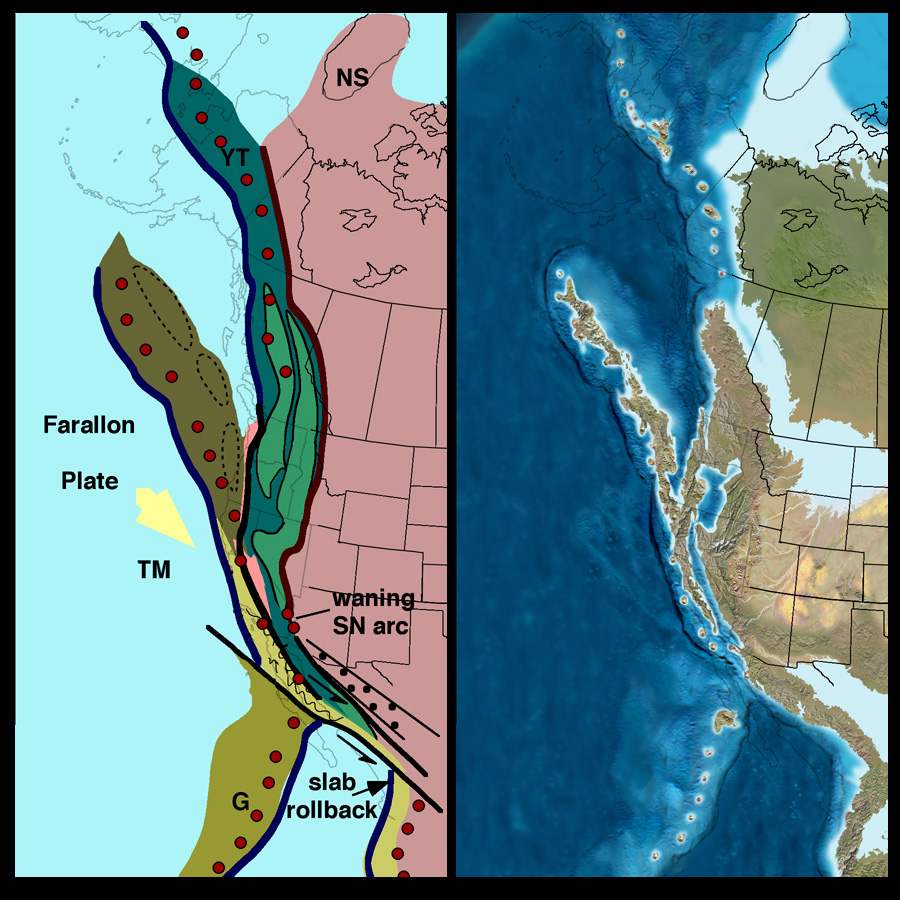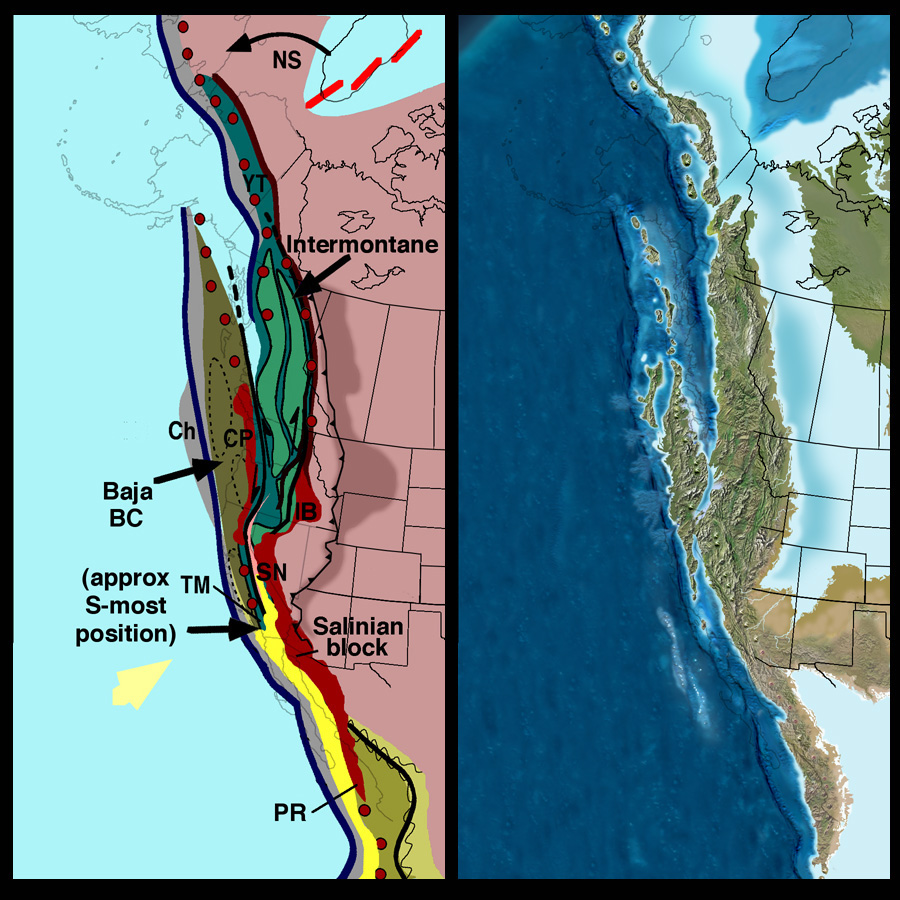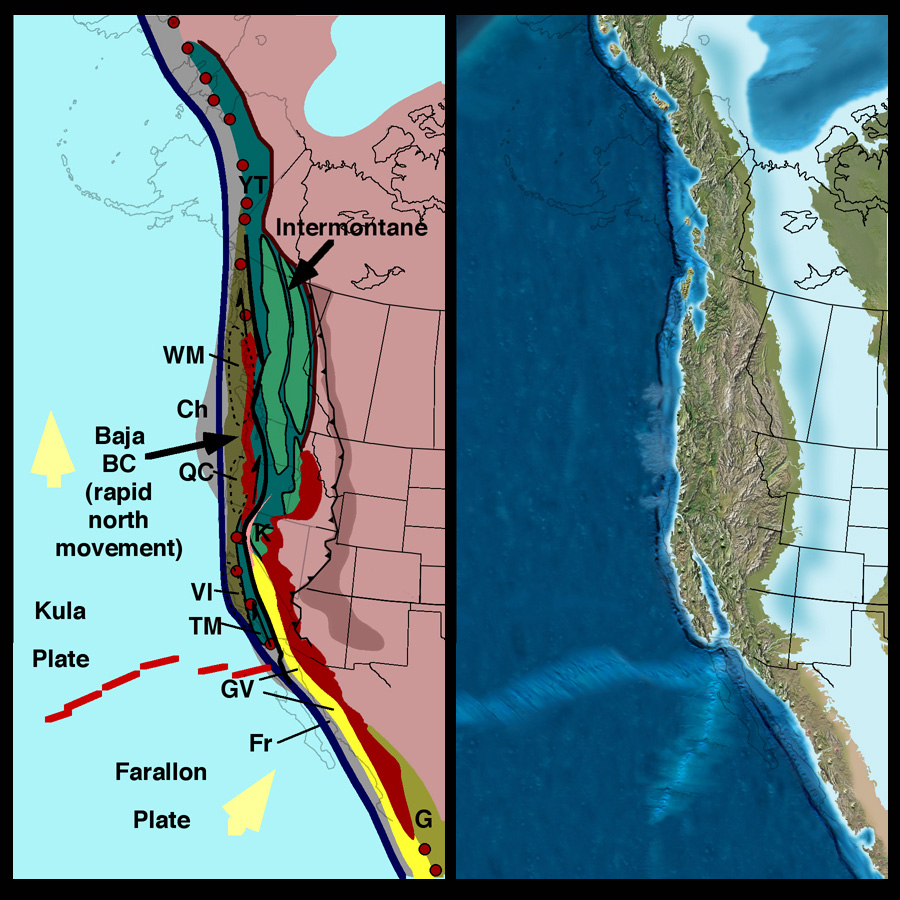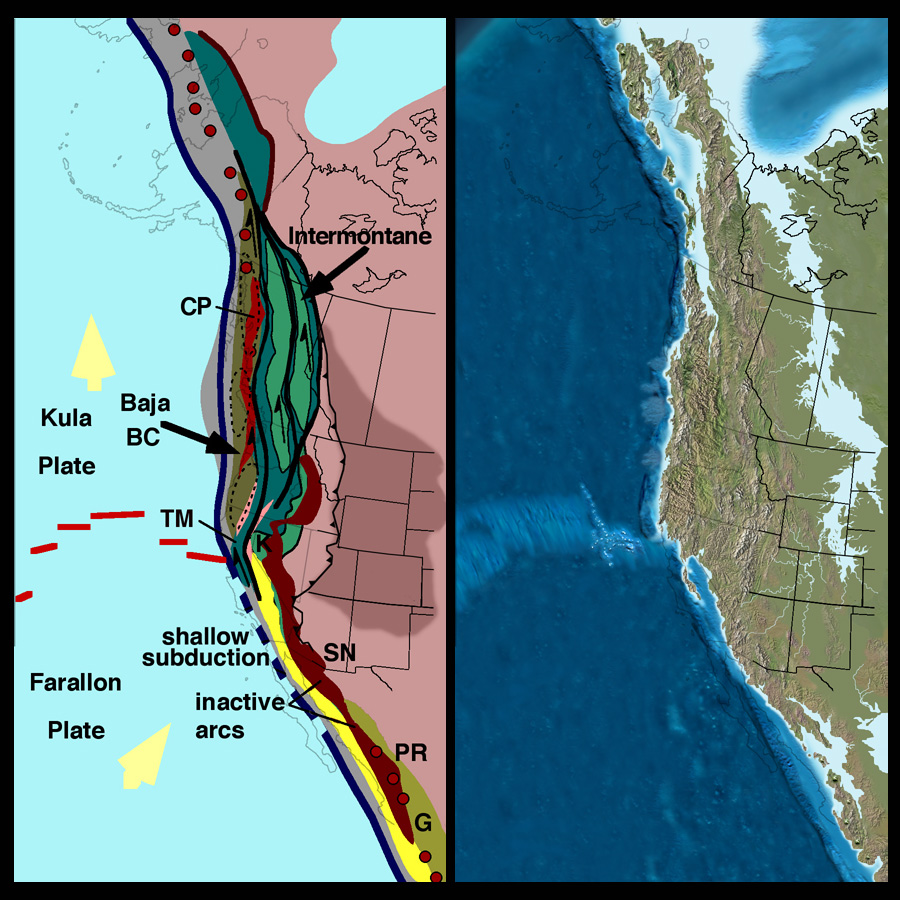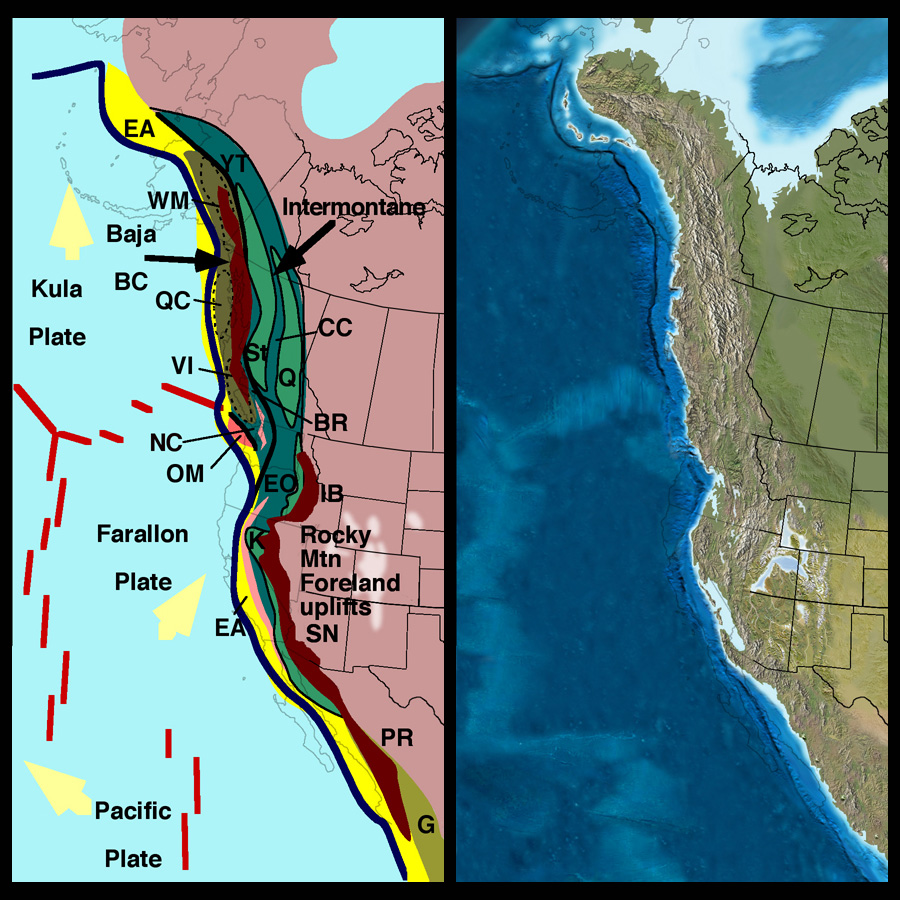 | Paleogeography and Geologic History |
290MA -permian terranes |
240 MA |
180MA |
160 MA |
145 MA |
125 MA |
105 MA |
85 MA |
65 MA |
50 MA |
Permian Tectonics and Paleogeography (290 Ma).
Permian
Mc Cloud arc fragmented during late Paleozoic truncation of SW North America
Assembly of western Pangaea completed
Transform margin coupled Mc Cloud arc with arcs built on Chortis and South America
Havallah back arc basin (HB) and Slide Mtn back arc separated northern arc, Quesnellia (Q), from Antler belt (A) and western North America
Triassic Tectonics and Paleogeography (240 Ma).
Early to Middle Triassic (240 Ma)
McCloud arc fragmented and accreted to North America resulting in Sonoman orogeny
Caborca terrane moved SE along truncated continental margin
Subsequent Cordilleran arc was continental to south and marine to north
Early Jurassic Tectonics and Paleogeography (180 Ma).
Early to Middle Jurassic (180 Ma)
∑ Fringing Cordilleran arc accreted to western North America including Bridge River, North Cascades, western parts of Eastern Oregon terranes, and western terranes of Klamaths and Sierra Nevada
∑ Older Mesozoic back arc basins closed
Middle Jurassic Tectonics and Paleogeography (160 Ma).
Middle to Late Jurassic (160 Ma)
Major arc magmatism
Initial collision between southern Wrangellia and Cordilleran margin at approximately the latitude of Klamaths and Sierras
Fringing arcs south of collision zone
Ophiolites obducted in collision zone and in inter arc region between Cordilleran arc and fringing arcs
Foreland basin in Utah and thrusting in Nevada
Rift basin in southwestern North America related to opening Gulf of Mexico
Late Jurassic Tectonics and Paleogeography (145 Ma).
Latest Jurassic (145 Ma)
Major plate reorganization -- change to sinistral motion of Farallon plate relative to North America causes Wrangellia to move southward
Complex series of events at SW margin of North America: Chortis and related terranes shift SE as Atlantic and Proto-Caribbean expand; transform fault and oblique rift systems developed along waning continental arc (McCoy-Bisbee; Mojave-Sonoran megashear); early Franciscan mťlange formed farther outboard
Nutzotin Ocean between northern Wrangellia and North America remained open
Oblique convergence shut down much of Cordilleran arc
Early Cretaceous Tectonics and Paleogeography (125 Ma).
Early Cretaceous (125 Ma)
Guerrero arc collided and subduction zone rebuilt on west face
South-moving Wrangellia linked to North Cascades, Tyaughton-Methow, and adjacent terranes to form Baja BC
Tectonic escape of Intermontane terrane and parts of California northward Great Valley forearc basin and Franciscan subduction complex built on reorganized Cordilleran margin; as Baja BC moved southward, northern Great Valley a transpressive basin (?)
North Slope terrane rotated CCW as Canadian basin opened
Early Sevier thrust belt and foreland basin formed
Late Early Cretaceous Tectonics and Paleogeography (105 Ma).
late Early Cretaceous (105 Ma)
Two large volume magmatic belts formed (Peninsular, Sierra Nevada, Idaho; Coast Plutonic complex built on Baja BC); plutonic complexes may have been fed by volatiles from under-thrusting of North American miogeocline
South-moving Baja BC approached maximum S position at latitude of southern Arizona
Baja BC west of classic Great Valley and Franciscan complexes; Great Valley as interarc basin(?)
Rotated North Slope terrane collided with Yukon-Tanana and related terranes
Sevier orogeny continued and foreland basin expanded eastward
Late Cretaceous Tectonics and Paleogeography (85 Ma).
Late Cretaceous (85 Ma)
Plate reorganization as Kula separated from Farallon Plate; dextral transpression with North America; Kula-Farallon ridge moved northward along coast
Baja BC transported northward with obliquely converging Kula plate
Major magmatic activity in two belts (110-85 Ma) followed by strong decline and null in magmatic activity (80-40 Ma)
Andean-style segmentation of Farallon arc from Central America to Southern California
Sevier thrusting continued and foreland basin shifted locus of subsidence southward in response to shallow
Laramide subduction (shallow angle)
Cretaceous-Tertiary Tectonics and Paleogeography (65 Ma).
Latest Cretaceous - Early Tertiary (65 Ma)
Triple junction and Baja BC moved rapidly northward
Intermontane terranes translated to north
Forearc sedimentation (Franciscan-Great Valley) continued along southern margin
Uplift of Coast plutonic complex generated large deep-sea fan deposits (Chugach flysch)
Strong Sevier thrusting and foreland basin
Laramide orogeny: Farallon Plate shallow subduction caused expansion NE of foreland uplifts and basins
Eocene Tectonics and Paleogeography (50 Ma).
Tertiary Eocene (50 Ma)
Intermontane and Baja BC blocks continue northward translation along with north-migrating Kula-Farallon plate boundary; many terranes approach their present latitude with respect to North America
Olympic terrane accreted
Extensive fore arc sedimentation along most of Cordilleran margin
Rocky Mountain foreland uplift, deformation, and shallow-subduction-related magmatism; interior sedimentation mostly restricted to Rocky Mountain foreland basins
